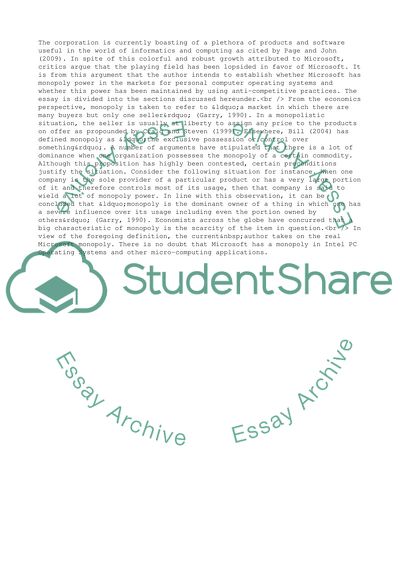Cite this document
(Microsoft Monopoly Term Paper Example | Topics and Well Written Essays - 2000 words, n.d.)
Microsoft Monopoly Term Paper Example | Topics and Well Written Essays - 2000 words. Retrieved from https://studentshare.org/business/1745946-does-microsoft-has-monopoly-power-in-the-markets-for-personal-computer-operating-system-if-yes-did-microsoft-maintain-this-power-by-using-anticompetitive-practices
Microsoft Monopoly Term Paper Example | Topics and Well Written Essays - 2000 words. Retrieved from https://studentshare.org/business/1745946-does-microsoft-has-monopoly-power-in-the-markets-for-personal-computer-operating-system-if-yes-did-microsoft-maintain-this-power-by-using-anticompetitive-practices
(Microsoft Monopoly Term Paper Example | Topics and Well Written Essays - 2000 Words)
Microsoft Monopoly Term Paper Example | Topics and Well Written Essays - 2000 Words. https://studentshare.org/business/1745946-does-microsoft-has-monopoly-power-in-the-markets-for-personal-computer-operating-system-if-yes-did-microsoft-maintain-this-power-by-using-anticompetitive-practices.
Microsoft Monopoly Term Paper Example | Topics and Well Written Essays - 2000 Words. https://studentshare.org/business/1745946-does-microsoft-has-monopoly-power-in-the-markets-for-personal-computer-operating-system-if-yes-did-microsoft-maintain-this-power-by-using-anticompetitive-practices.
“Microsoft Monopoly Term Paper Example | Topics and Well Written Essays - 2000 Words”. https://studentshare.org/business/1745946-does-microsoft-has-monopoly-power-in-the-markets-for-personal-computer-operating-system-if-yes-did-microsoft-maintain-this-power-by-using-anticompetitive-practices.


